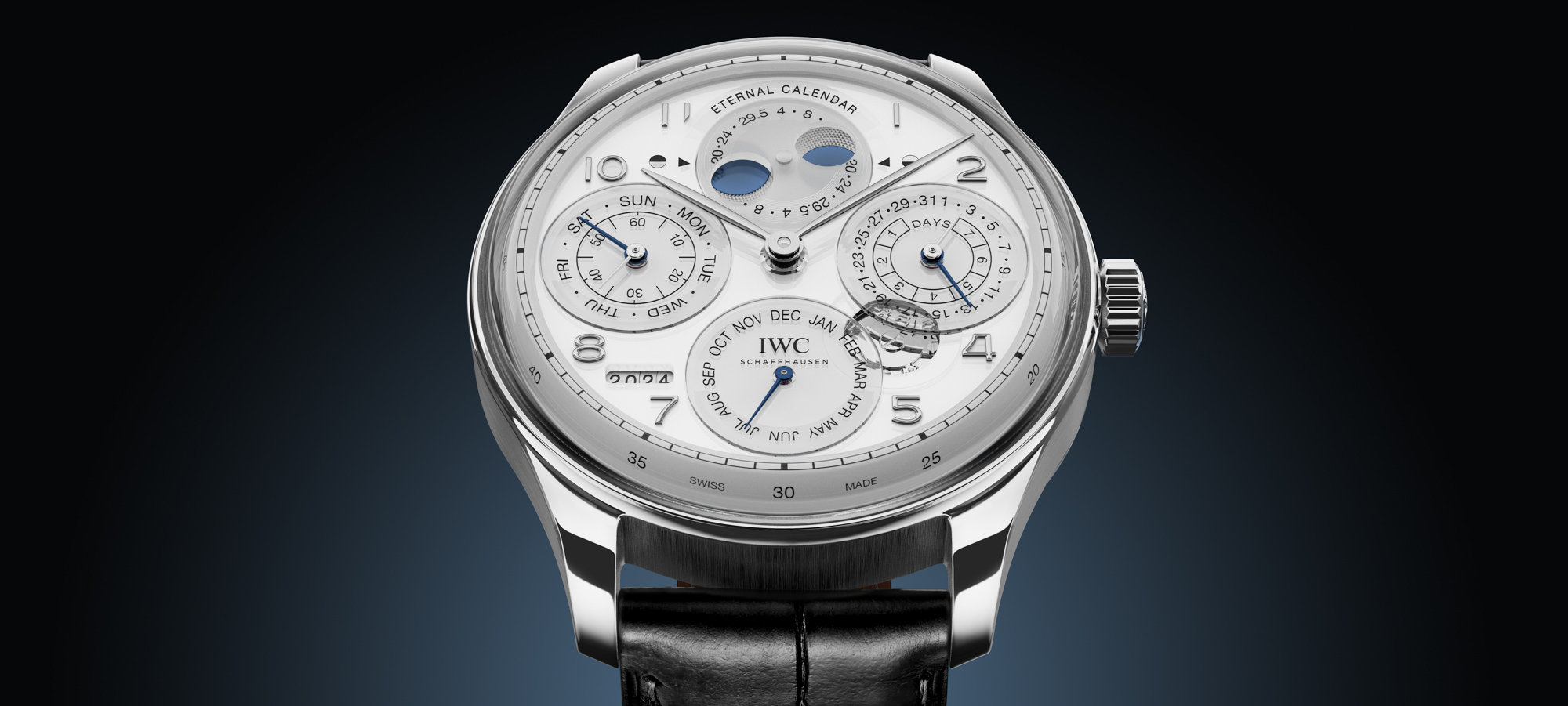
As one of its latest novelties unveiled this year at Watches & Wonders Geneva 2024, IWC has expanded upon its signature dual moonphase perpetual calendar and taken the concept several steps further. Due to the irregularities that are inherent to the Gregorian calendar itself, conventional perpetual calendar watches will require manual adjustment in the year 2100, along with subsequent centurial years that are not counted as leap years. However, the new IWC Portugieser Eternal Calendar features the brand’s first secular perpetual calendar movement, which will automatically compensate for these leap year irregularities all the way up until the year 4000, and it features a newly redesigned moonphase complication that will only deviate by one day during the next 45 million years.

The perpetual calendar is one of watchmaking’s most prestigious complications, although it is ultimately an imperfect mechanism due to the irregularities that exist within the standard Gregorian calendar. While a leap year normally occurs once every four years, additional corrections are needed to keep the Gregorian calendar synchronized with the solar year, and only the centurial years divisible by 400 are actually counted as leap years, while the others serve as exceptions and are treated as normal years. Since a standard perpetual calendar works on a four-year cycle, manual adjustment is needed in the years such as 2100, 2200, and 2300 (but not in 2400), and while three corrections during 400 years is already an impressive feat, the new IWC Portugieser Eternal Calendar (ref. IW505701) will automatically compensate for all of the irregularities of the Gregorian calendar and will calculate leap years correctly all the way up to the year 3999, as it has not yet been officially decided whether the year 4000 will be a leap year or not.

While most people reading this on the day of the Portugieser Eternal Calendar’s launch will likely be dead by the time a regular perpetual calendar requires manual adjustment in the year 2100, the year 4000 is so incredibly far in the future that it is somewhat impossible to fathom. As a point of reference, the Gregorian calendar itself has only been around since 1582 (442 years), and the IWC Portugieser Eternal Calendar will autonomously update its calendar displays for the next 1976 years, which exceeds the scope of tangible performance metrics and basically only exits within the realm of horological theory. Aside from the fact that you won’t live long enough to even see the first time that the Eternal Calendar performs its signature leap year skipping trick, the next ten generations of your descendants will also be long gone before you first need to adjust its calendar display.
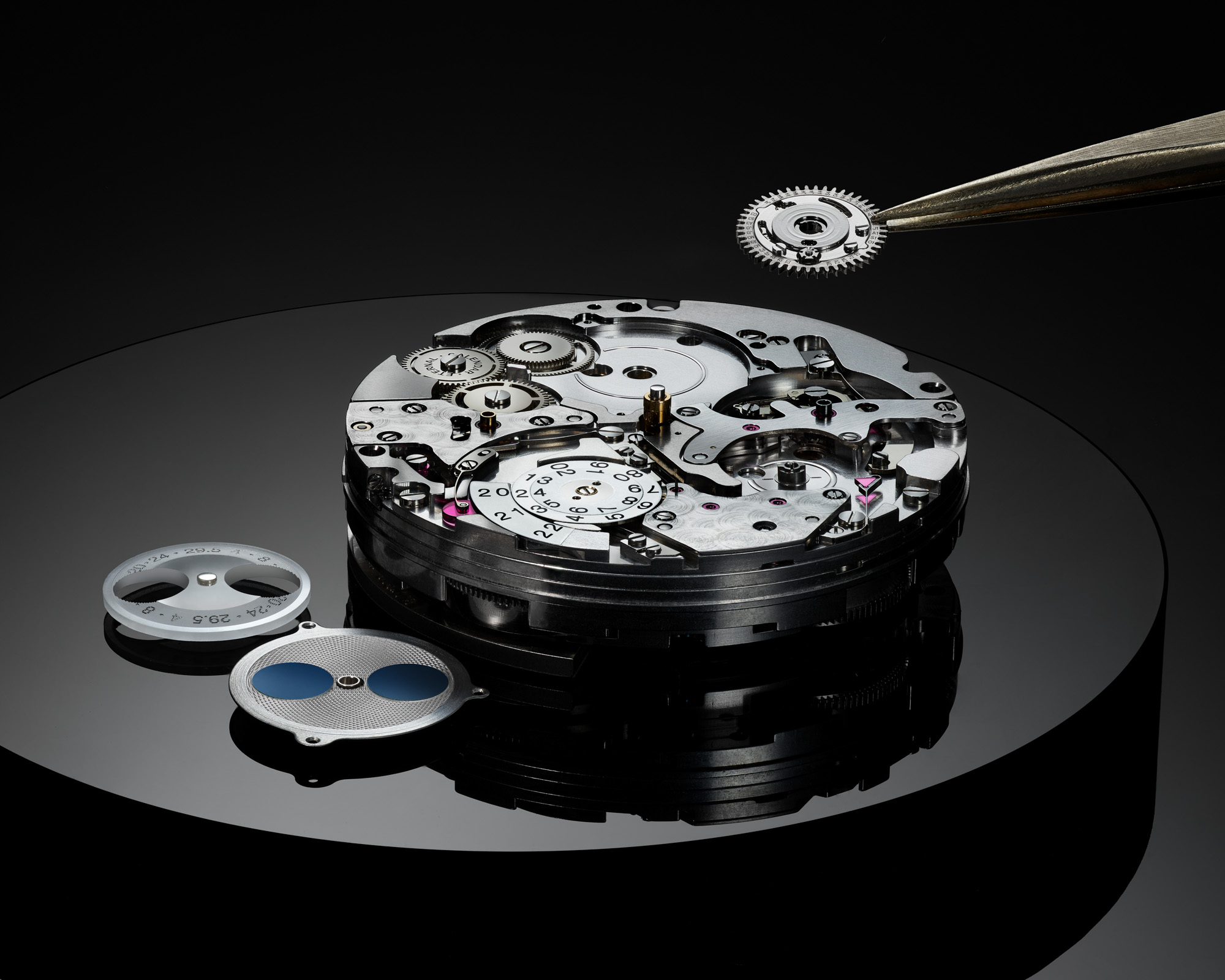
Crafted from 950 platinum, the case of the new IWC Portugieser Eternal Calendar measures 44mm in diameter by 15mm thick, and it features a box-shaped sapphire crystal above its dial, along with a screw-on display caseback. Water resistance for the model comes in at 50 meters to protect against daily contact, while a signed crown at 3 o’clock serves as the sole way of interacting with the internal movement, and this means the side of the case is free from the additional push pieces that often appear on perpetual calendar watches. Aside from the prominent box-sapphire crystal, the overall case profile of the Portugieser Eternal Calendar is fairly traditional, and its lugs are fitted with a black alligator leather strap with a matching platinum folding clasp that is produced by the Italian leather artisan Santoni.

The dial fitted to the new IWC Portugieser Eternal Calendar is made from glass, and the underside of its surface is frosted and finished with white lacquer. The registers are separately constructed and attached to the dial, while the Arabic numeral hour markers are applied to the top, and the depth of the glass dial surface provides the text and indexes with the appearance of floating above the white lacquer that appears on the reverse side of the dial’s transparent structure. Further adding to the visual depth of the Portugieser Eternal Calendar’s display is a white lacquered flange with the Portugieser’s signature minute track printed upon it, and this component sits between the glass dial and the box-shaped sapphire crystal to create a three-dimensional effect where the edge of the dial is elevated to be positioned directly under the dramatic curvature of the box-shaped sapphire crystal.

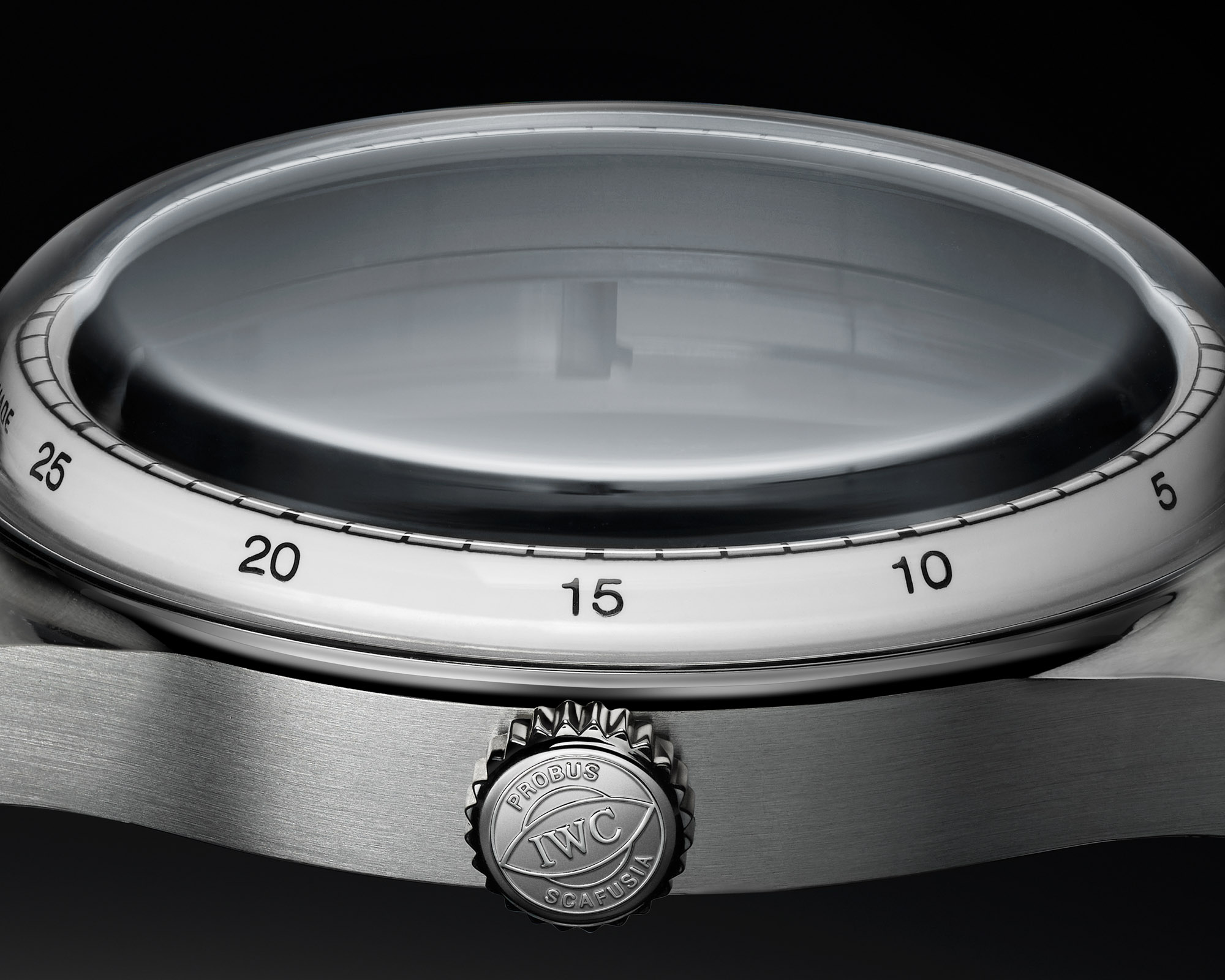
Since the new IWC Portugieser Eternal Calendar is an evolution of the brand’s existing perpetual calendar series, the layout of its various displays are largely the same as what you will find on models such as the Big Pilot’s Watch Perpetual Calendar, and it features IWC’s Double Moon indicator, which simultaneously displays the current phase of the moon as seen from both the Northern and Southern hemispheres. The display itself consists of a fixed lower disc with two dark blue dots that is crafted from titanium and decorated with a guilloché pattern, while a second rotating disc made from a frosted glass disc with two circular openings is mounted on top. The superimposed image of the two stacked discs depicts the current phase of the moon in each hemisphere, although the moonphase complication found inside the new Portugieser Eternal Calendar represents a significant evolution in accuracy compared to what can be found on the brand’s previous moonphase models.
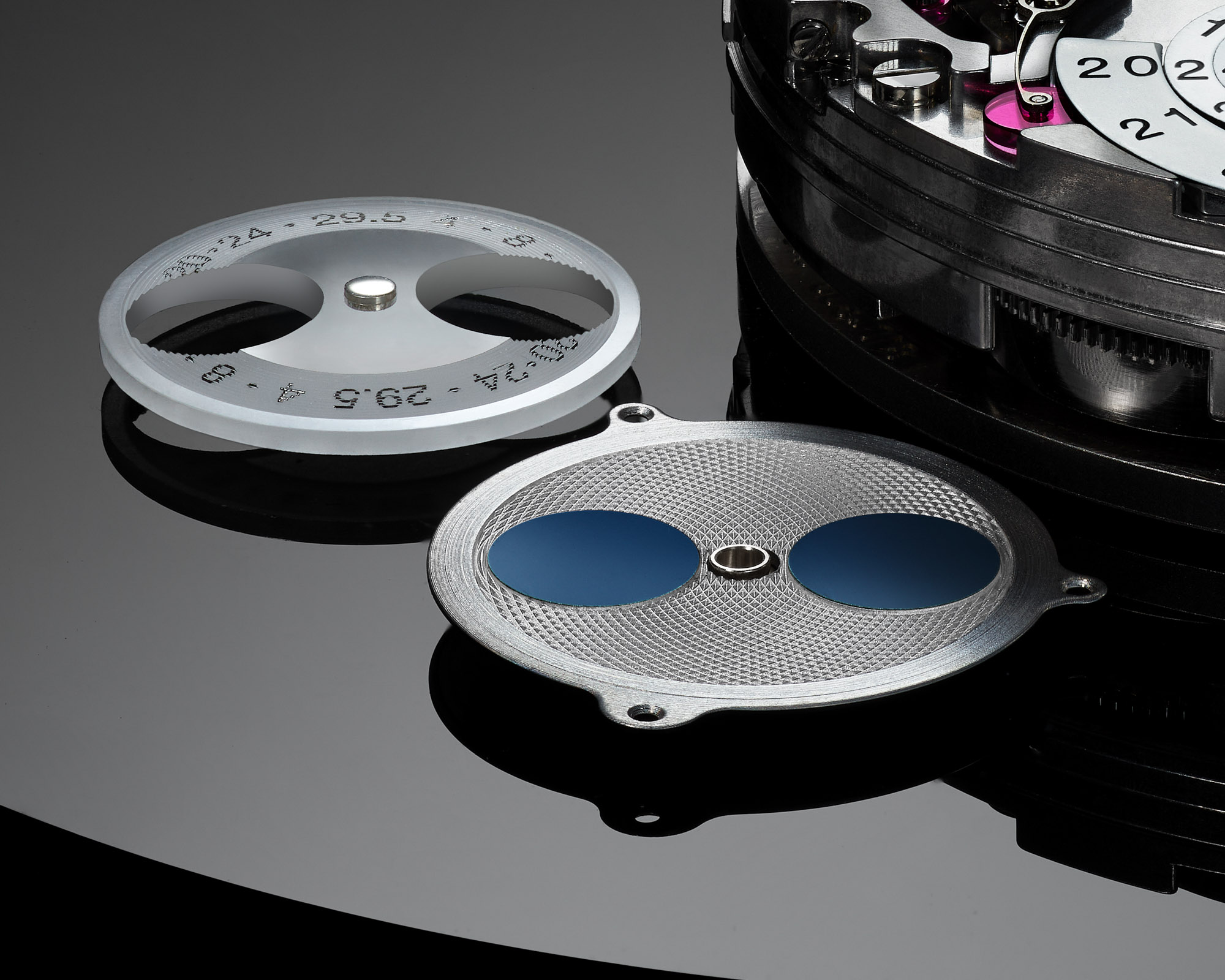

The original IWC Da Vinci Perpetual Calendar Chronograph from 1985 had a moonphase that was accurate to one day within 122 years, and the brand increased its standards in 2003 with the Portugieser Perpetual Calendar, which brought the accuracy of its moonphase complication up to 577.5 years. With that in mind, the new IWC Portugieser Eternal Calendar has a moonphase that is accurate to one day within 45 million years, and this is achieved by placing a reduction gear train with three intermediate wheels between the base movement and the moonphase disc. IWC used a computer program to simulate more than 22 trillion different gearing combinations to find the optimal solution and ultimately selected this one, as it will mathematically take a whopping 45 million years before it will deviate by a single day.
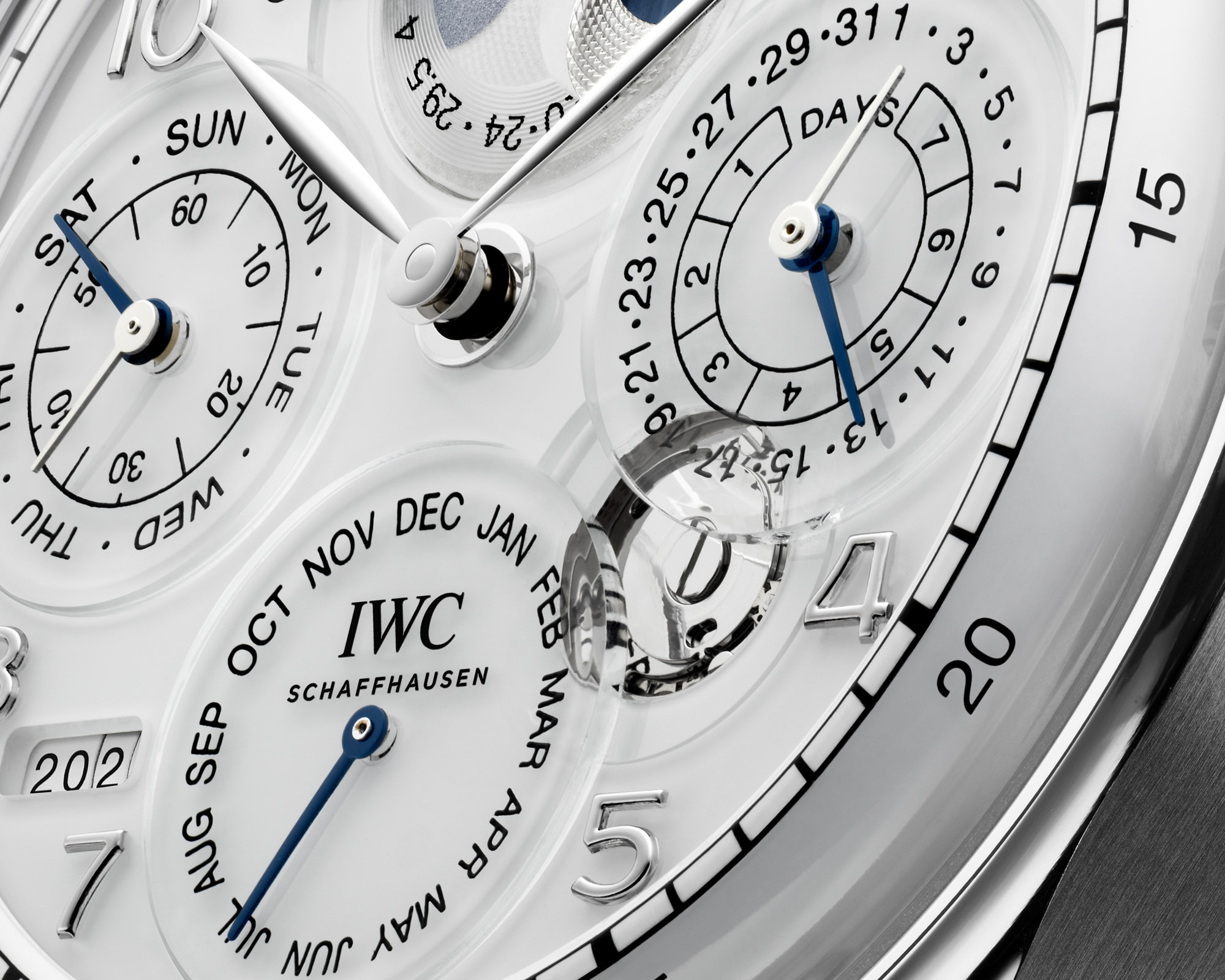
If the years 2100 or 4000 sounded unfathomably far in the future, the first year that the IWC Portugieser Eternal Calendar will need to have its moonphase indicator manually adjusted is the year 45002024, which is truly befitting of the “Eternity” part of this model’s name. Aside from the fact that even the idea of the number 45002024 relating to a calendar year is borderline ludicrous, there is a fairly good chance that our species may no longer be inhabiting this planet when the time finally comes for the first manual correction of the Portugieser Eternal Calendar’s moonphase display — and by this point, anything related to Earth’s moon (along with the Earth itself) will likely be entirely irrelevant.
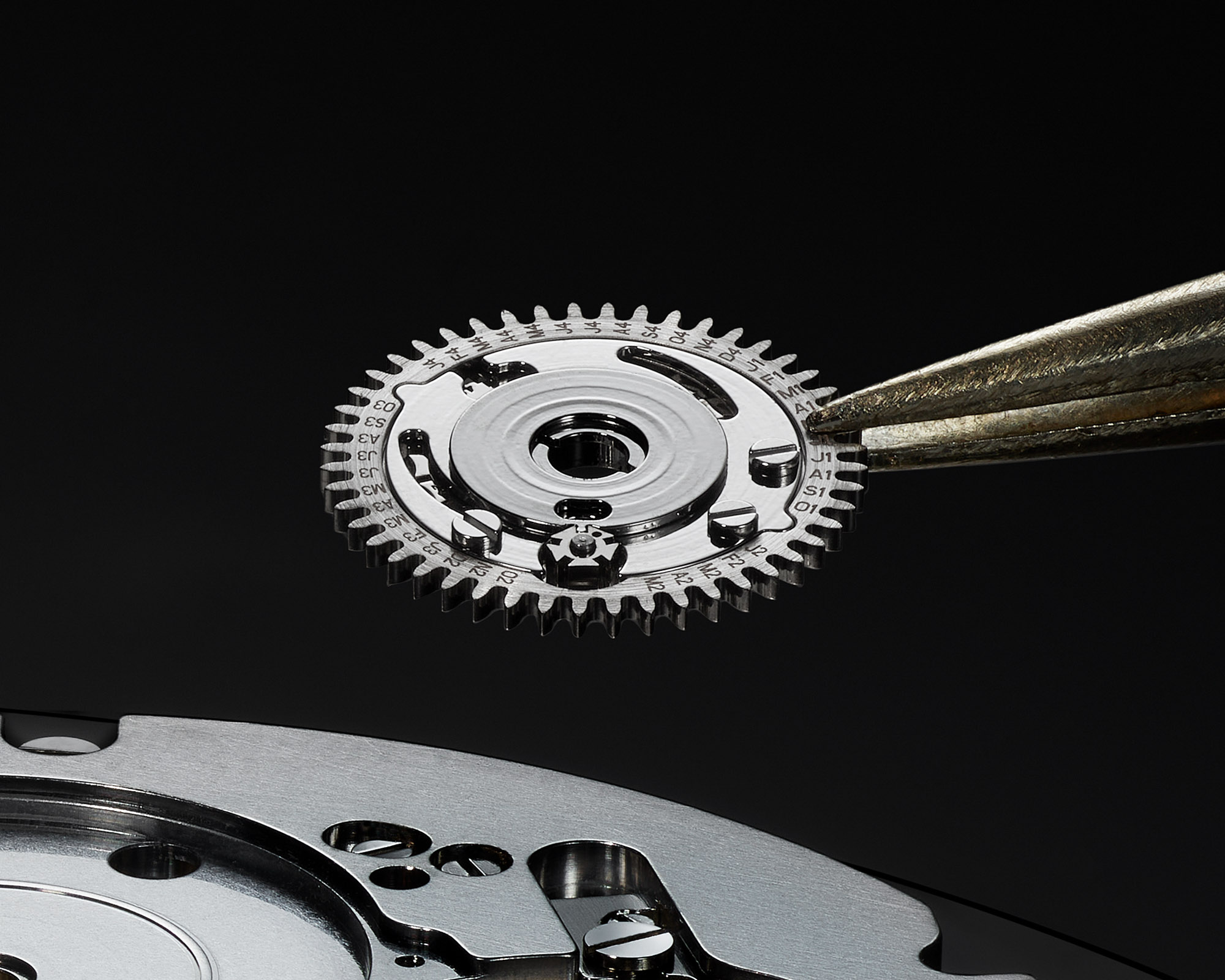
Powering the new IWC Portugieser Eternal Calendar and making all of this advanced functionally possible is the brand’s manufacture Caliber 52640 automatic movement based upon the core architecture of IWC’s existing perpetual calendar series. As it shares the same underlying structure, the IWC Cal. 52640 also runs at a frequency of 28,800vph (4 Hz) with a rather generous seven-day power reserve (approximately 168 hours). However, unlike the brand’s perpetual calendar movement, the new Cal. 52640 features an additional module that is rather elegantly designed with just eight components, and this module intervenes once every four years at the end of February to inform the calendar whether or not a leap year takes place. Moving incredibly slowly and completing just one rotation every four centuries, this “400-year gear” features three indentations, which cause the calendar to skip the three omitted leap years that occur during this period of time.

Although the new IWC Portugieser Eternal Calendar is fascinating from a conceptual standpoint, the real-world performance benefits that a secular perpetual calendar offers over a regular perpetual calendar are entirely non-existent to anyone who is reading this article today, and they really only exist within the context of mechanical ingenuity and theory. While the year 2100 is already very far in the future, years such as 4000 and 45002024 are borderline comical, yet the simple fact that IWC even bothered to produce such a timepiece is something that deserves to be commended, and the brand has ultimately created a more precise version of its already impressive perpetual calendar. Similar to how the brand includes the additional century disc with its perpetual calendar watches for when the movements need to be updated in the year 2100, the new Portugieser Eternal Calendar is less about its real-world benefits to the present-day owner and more of a statement about how IWC views its products and the underlying ethos that drives the brand’s innovations.
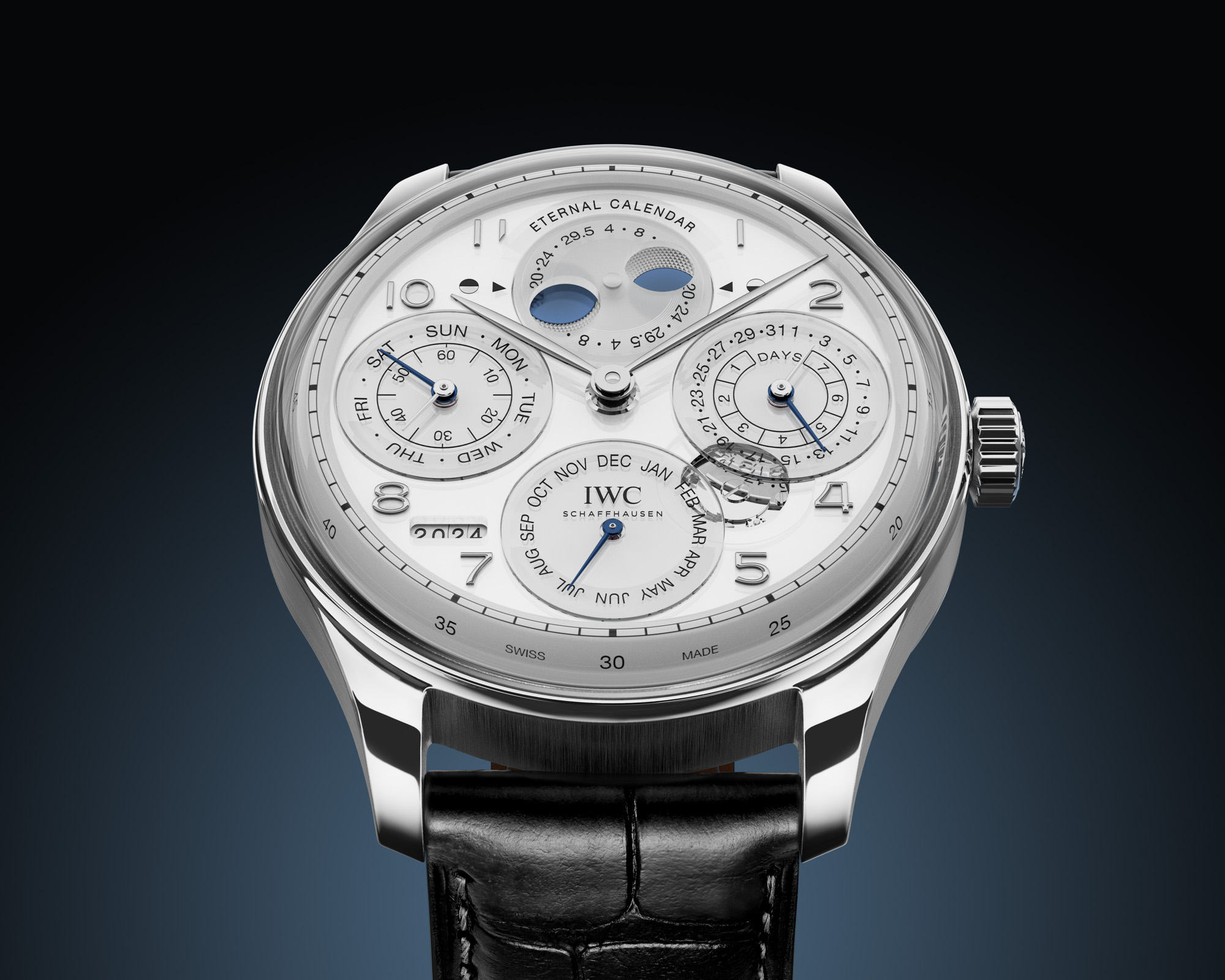
The new Portugieser Eternal Calendar is easily the standout release from IWC for Watches & Wonders Geneva 2024, and I’m quite interested to see its multi-component glass dial in person. Given its platinum case, intricate glass dial, and secular perpetual calendar movement, the IWC Portugieser Eternal Calendar ref. IW505701 exists as somewhat of a halo piece within the brand’s catalog, and it immediately claims the top spot as the most expensive Portugieser model currently available with an official retail price of $155,000 USD. Given the highly complex and conceptual nature of a secular perpetual calendar, I don’t foresee Eternal Calendar models proliferating within IWC’s catalog in quite the same way that the brand offers a variety of different models with its standard perpetual calendar movement. That said, I could easily see a pared-down version with a standard metal dial or even a Pilot’s Watch variation making an appearance at some point in the future. For more information on the IWC Portugieser Eternal Calendar, please visit the brand’s website.

